#cyclone AMphan
Explore tagged Tumblr posts
Text

Supratim Bhattacharjee: Overall winner
Sinking Sundarbans, India, 18 August 2020 A girl stands among the wreckage of what was once her family’s tea shop, which has been swept away by the sea in the Frazerganj area of the Sundarbans. Between 2019 and 2021, the Sundarbans was hit by the cyclones Fani, Bulbul, Amphan and Yaas. Mangrove Photography Awards. Mangrove Action Group
5 notes
·
View notes
Text
Business Visa is not meant for collecting Funds
Randa Chehab v. Union of India & Others
WP © 1250/2023
Before Delhi High Court
The Writ was dismissed on 18.12.2023 by Hon’ble Mr. Justice Subramonium Prasad J as petitioner failed to establish violation of her right.
The petitioner a US citizen has challenged her deportation (before Delhi High Court) by the Bureau of Immigration from Trivandrum, Kerala Airport on 28.11.2022 as being arbitrary, unreasonable, illegal and unconstitutional.
Notice was issued to the Union of India on 01.02.2023.
Status Report was filed by the Counsel of Union of India.
The Status Report discloses that the Petitioner was issued the following visas by the Consulate General of India, San Francisco, i.e., T-1 Visa No. VK 0275900 valid from 31.03.2017 to 30.03.2027; and B-1 Visa No. VK 3934693 valid from 20.06.2019 to 19.06.2024.
The Petitioner again applied for a tourist visa on 15.12.2022 which was rejected as her name was found in the adverse/banned list entry of the Ministry of Home Affairs.
The Status Report revealed that the name of the Petitioner has been blacklisted at the behest of Foreigners Regional Registration Office (FRRO), Trivandrum as she was involved in public fund collection while visiting on a business visa which is not permitted.
It is stated that as of today there is an adverse entry report against the Petitioner.
General policy guideline to Indian Visa
When a person is granted a business visa, the purpose is to attend business meetings and technical meetings and funds cannot be collected for the said purpose.
Submission of the Counsel of the petitioner
The Petitioner has been involved in charitable activities and is collecting public funds for the purpose of a charity, and this cannot be said to be unlawful.
The Petitioner has rendered yeomen's services when cyclone Amphan in 2020 struck in eastern India and she has since been closely associated with various charitable activities.
In this backdrop, it is not wrong to collect funds.
Petitioner holds a valid tourist visa and as a tourist visa holder, she can be permitted to come to India.
Petitioner has come to India numerous times and the reason for blacklisting is completely arbitrary.
Submission of the Counsel of the State
Section 3 of the Foreigners Act gives the power to the Central Government to make provisions either generally or for all foreigners prohibiting, regulating or restricting the entry of foreigners into India or their departure from India.
Issue
Whether the violation of the conditions of the business visa can be a sufficient reason for deportation and blacklisting of the Petitioner?
Law
Collecting money ostensibly for charitable activity is not permitted when a foreigner comes to India on a business visa.
Since the Petitioner has admittedly acted contrary to what is permitted, the decision taken by the authorities to blacklist the Petitioner cannot be said to arbitrary and as such requiring any interference under Article 226 of the Constitution of India.
Observation of the Court
It is well settled that a Writ Court can exercise its jurisdiction under Article 226 of the Constitution of India only where there is a violation of a right.
In the absence of any right, a writ cannot be issued.
Since the Petitioner has not been able to establish violation of any rights granted to the Petitioner, this Court is not inclined to exercise its jurisdiction under Article 226 of the Constitution of India to interfere with the decision taken by the authorities.
Order
Writ Petition is dismissed.
Seema Bhatnagar

#T1Visa#B1Visa#charity#shieldofcharity#ruleoflaw#deportation#bureauofimmigration#trivandrum#section3foreignersact#centralgovernment#highcourtofdelhi#article226oftheconstitution
2 notes
·
View notes
Text
Puri most ravaged by 4 cyclones in 6 yrs
Bhubaneswar: Puri district bore the maximum brunt of the four cyclones that hit the state in the past six years in terms of damage and destruction of properties. Of the four cyclones in the past six years, ‘Fani’ and ‘Bulbul’ occurred in 2019, while ‘Amphan’ and ‘Yaas’ hit the state in 2020 and 2021, respectively. According to the data shared by the Special Relief Commissioner (SRC), a total of…
0 notes
Text
Mangrove Plantation in Indian Sundarbans: Development of Coastal Livelihood and Averting Climate Change

Opinion
Over the last few decades, Sundarbans ecoregions of India became devastating and reduced almost 25% due to soil erosion caused by rising sea level and natural calamities such as cyclone Aila (2009), Amphan (2020) and Yaas (2021). The rising sea level causes the sinking of several islands under water. To save the coastal vegetation, agricultural lands and associated inhabitants, Nature Environment and Wildlife Society (NEWS) involves local villagers for replantation of mangroves. As we know, mangroves are the most efficient natural barriers to prevent flooding due to their morphological adaptations. Surprisingly they form an association with other living groups including algae, fungi and bacteria [1-2] (Figure 1D). Hence newly planted mangrove vegetation can be the best place for safeguarding crustaceans, fishes and molluscs (Figure 1A-C). Most of the marine food chain or food web depends on fully grown mangrove vegetation. The International Union for Conservation of Nature and Natural Resources (IUCN) has already declared Sundarbans in “The Red List of Ecosystems”. The Red list highlighted the conservation from species to ecosystem level [3].
Read more about this article: https://crimsonpublishers.com/eimbo/pdf/EIMBO.000633.pdf
Read more Crimson Publishers Google Scholar Articles: https://scholar.google.com/citations?view_op=view_citation&hl=en&user=5CwCZSMAAAAJ&cstart=20&pagesize=80&citation_for_view=5CwCZSMAAAAJ:uc_IGeMz5qoC
#crimson publishers llc#marine biology#oceanographycrimson#oceanography#oceanography crimson#crimsonpublishers
1 note
·
View note
Text
Extreme Weather in India: Visualizing Life Loss Statistics
India, with its diverse climate and vast geographical expanse, is increasingly bearing the brunt of extreme weather conditions. In recent years, the frequency and intensity of these extreme events have surged, driven in part by climate change. This escalating pattern has had a dire impact on human life, with thousands losing their lives annually due to natural disasters like floods, droughts, and storms.
According to the National Disaster Management Authority (NDMA), over 1304 people lost their lives in 2022 alone due to natural calamities, marking a sharp rise from previous years. Cyclones, such as Cyclone Fani and Cyclone Amphan, have wreaked havoc along the eastern coast, displacing millions and causing numerous fatalities.
Floods remain a perennial threat, with states like Assam, Bihar, and Kerala witnessing devastating inundations. In 2022, floods claimed over 605 lives, as per the Indian Meteorological Department (IMD). We created this infographic that explores the stark increase in weather-related fatalities in India focusing on the most vulnerable regions.

Agriculture and the danger of lightning
Agriculture is one of the most vulnerable occupations when it comes to extreme weather, particularly lightning. Farmers and agricultural workers often spend long hours outdoors, increasing their risk of lightning strikes. According to the National Weather Service Lightning Fatalities of India, lightning accounted for over 53.2% of all deaths caused by natural disasters in 2022, with a significant proportion of victims being farmers.
In 2022, Bihar experienced notably high death rates due to thunderstorms and lightning, with 236 fatalities. Madhya Pradesh and UP are among other states with high amounts of deaths due to lightning. Several factors contribute to this alarming trend. These states are geographically prone to severe thunderstorms and lightning, especially during the pre-monsoon and monsoon seasons. Bihar particularly experiences intense storms that bring heavy rainfall, strong winds, and frequent lightning strikes. As a significant portion of the population relies on agriculture, requiring them to work outdoors, this increases their exposure to lightning strikes, as they often lack safe shelters during sudden storms.
Additionally, there is a lack of widespread awareness and education about lightning safety in rural areas. Many people are unaware of the necessary precautions to take during thunderstorms, such as avoiding open fields, seeking proper shelter, and staying away from trees and tall objects. Moreover, infrastructure in rural regions is often inadequate. The absence of lightning rods and other protective measures in homes and public buildings leaves people vulnerable.
Combining geographical vulnerability, occupational exposure, lack of awareness, inadequate infrastructure, and insufficient emergency response contribute to the high death rates from thunderstorms and lightning in Bihar and Madhya Pradesh.
Preparedness and reducing deaths from Cyclones
The Super Cyclone of 1999 was a catastrophic event that devastated Odisha, India. With wind speeds exceeding 260 km/h and a storm surge up to 7 meters high, it caused unprecedented destruction. Over 10,000 people lost their lives, and millions were left homeless. The cyclone destroyed infrastructure, agriculture, and livestock, leading to severe economic losses and long-term hardship for the affected communities.
In recent years, Odisha has made significant strides in cyclone preparedness and disaster management. By 2022, the state had implemented several measures to mitigate the impact of cyclones. These included the construction of robust cyclone shelters and embankments, improving early warning systems, and conducting regular community awareness and preparedness programs. The Odisha State Disaster Management Authority (OSDMA) has played a crucial role in coordinating these efforts.
The state has also invested in modern technology for real-time weather monitoring and forecasting, ensuring timely and accurate warnings. During cyclones, efficient evacuation plans and pre-positioning of relief materials have significantly reduced casualties and damage. The state’s proactive approach and community involvement have transformed Odisha into a model for disaster resilience, showcasing how effective planning and preparedness can mitigate the impact of natural disasters. The initiatives have become a case study for the other states and improved preparedness which reduced the deaths from extreme cyclones.
Climate Change and Extreme Weather
Climate change significantly contributes to extreme weather events, leading to increased floods, heavy rains, high winds, thunderstorms, and lightning. In 2022, these phenomena had a profound impact on Indian states.
Rising global temperatures cause more evaporation, leading to increased moisture in the atmosphere. This results in heavier and more unpredictable rainfall, often causing flash floods. Indian states like Assam and Bihar experienced severe floods due to excessive monsoon rains exacerbated by climate change.
Additionally, warming oceans contribute to the intensity of cyclones and storms. Higher sea surface temperatures provide more energy for storms, leading to stronger winds and increased rainfall. Coastal states like Odisha and West Bengal faced more intense cyclones, with destructive high winds and storm surges.
0 notes
Text
Building Resilient Communities: Disaster Preparedness and Response in India
In a country as diverse and geographically varied as India, building resilient communities cannot be overstated, especially regarding disaster preparedness and response. Over the years, India has experienced a range of natural calamities, from devastating earthquakes to powerful cyclones, which have underscored the need for a robust disaster management framework.
Evolution of India's Disaster Response
India's journey in disaster response has evolved significantly over the decades. Historically, the country has faced major disasters such as the Gujarat earthquake in 2001, the Indian Ocean tsunami in 2004, and recurring cyclones like Cyclone Phailin in 2013 and Cyclone Amphan in 2020. Each of these events has been a catalyst for learning and adapting new technologies and methodologies in disaster management.
The establishment of the National Disaster Management Authority (NDMA) in 2005 marked a pivotal moment in India's approach to disaster preparedness. The NDMA has been instrumental in formulating policies, plans, and guidelines aimed at enhancing the country's resilience against disasters. Additionally, advancements in early warning systems, satellite technology, and communication networks have significantly bolstered India's ability to forecast, monitor, and respond swiftly to disasters.
Importance of Resilient Communities
Building resilient communities is not solely the responsibility of the government but requires active participation from all stakeholders, including community members, NGOs, and private sector entities. A resilient community is prepared, informed, and cohesive in the face of adversity. This involves:
Awareness and Education
In a world that is developing by the minute, it is important to prepare children and their communities for disaster management. By educating communities about disaster risks, preparedness measures, and evacuation protocols, the prevention method is at play enabling the citizens to mitigate risks and be self-reliant during any disaster.
Infrastructure and Planning
Developers and planners must use strategies and resources that are constructed to keep the surroundings safe. By developing resilient infrastructure and land-use planning that considers disaster risk reduction, communities can be built that do not get impacted catastrophically.
Community Engagement
With continuous disaster management training and workshops in RWAs, offices, educational institutions, and public spaces, the community can be encouraged to be alert and calm during challenging times. By encouraging community participation in planning and response efforts, and fostering a sense of ownership and solidarity, disaster management can be effective and resilient communities can be established.
Role of Community Stakeholders
Community stakeholders play a crucial role in disaster management by complementing governmental efforts with localized knowledge and resources. Collaboration between local authorities, social development organizations like Smile Foundation, and community leaders is essential for effective disaster preparedness and response. These partnerships can ensure timely evacuation, distribution of relief supplies, and the restoration of essential services in affected areas.
The Way Forward
Looking ahead, the integration of technology, data-driven decision-making, and capacity-building initiatives will further strengthen India's disaster management capabilities. Investing in resilient infrastructure, enhancing early warning systems, and promoting sustainable development practices are critical components of building long-term resilience.
Smile Foundation's Role in Disaster Management
Smile Foundation has a longstanding commitment to disaster management across India, extending support during critical events such as the floods in Kerala, fires in Delhi, and the Kashmir earthquake. The recent devastating floods in Assam during the 2024 monsoon season have left over 1.5 million families displaced and communities in disarray. Homes, schools, hospitals, and essential services have been severely impacted, while agricultural fields lie submerged, posing a significant threat to food security. The most vulnerable groups, including children, the elderly, and women, face heightened health risks due to stagnant water and inadequate living conditions.
In response to this crisis, Smile Foundation has swiftly activated its resources on the ground. Our dedicated team is tirelessly providing urgent medical care, distributing essential relief kits, and delivering vital supplies to those affected.
However, recognizing the scale of disasters and India's vast population, it is crucial to understand that disaster management is a shared responsibility. Smile Foundation emphasizes the importance of collaboration among communities, corporate entities, social organizations, and the government. By coming together, we can effectively prepare communities for disasters, mitigate risks, and safeguard the lives of our fellow citizens.
Join Smile Foundation in aiding those affected by the catastrophic Assam floods. Your support can make a life-changing difference. Act now to help rebuild and restore hope.
0 notes
Text

Here on earth you will have many trials and sorrows. But take heart. John 16:33
உலகத்தில் உங்களுக்கு உபத்திரவம் உண்டு, ஆ��ாலும் திடன்கொள்ளுங்கள். யோவான் 16 : 33
#cyclone #storm #india #nature #s #mustang #weather #rain #wind #thunderstorm #photography #tropicalcyclone #v #monsoon #rainfall #cyclones #cyclonenation #rainy #rains #rainstorm #rainyseason #amphan #ford #bhfyp #monsoonweather #chennaicyclone #Cyclone chennai #chennai #
Michaung #CycloneMichaung
0 notes
Text
IAS Officer Has Led Odisha’s Stellar Disaster Management for 20 Yrs
The coastal state of Odisha has faced the wrath of cyclones almost every year. Over the last two decades, the state has faced numerous devastating cyclones including the Super Cyclone (1999); Phailin (2013); Hudhud (2014); Titli (2018); Fani and Bulbul (2019); Amphan (2020); Yaas, Gulab, Jawad (2021); and Asani (2022). Among these cyclones, the 1999 Super Cyclone ranks among the worst natural…
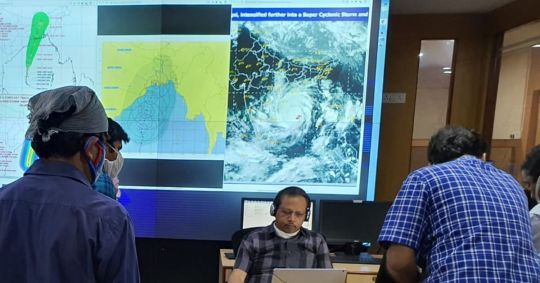
View On WordPress
0 notes
Text
IAS Officer Has Led Odisha’s Stellar Disaster Management for 20 Yrs
The coastal state of Odisha has faced the wrath of cyclones almost every year. Over the last two decades, the state has faced numerous devastating cyclones including the Super Cyclone (1999); Phailin (2013); Hudhud (2014); Titli (2018); Fani and Bulbul (2019); Amphan (2020); Yaas, Gulab, Jawad (2021); and Asani (2022). Among these cyclones, the 1999 Super Cyclone ranks among the worst natural…

View On WordPress
0 notes
Link
0 notes
Text
Cyclone Mocha: IMD predicts an upcoming cyclonic storm over the Bay of Bengal

As a low-pressure area develops in the region, Cyclone Mocha, the year's first cyclone, is expected to form over the southeast Bay of Bengal this week. A cyclonic circulation is expected to form around May 6, according to the IMD. However, the cyclone's formation has yet to be confirmed. "On or around May 6, 2023, a cyclonic circulation is likely to form over the southeast Bay of Bengal." "A low-pressure area is likely to form over the same region during the next 48 hours (May 7 and 8) under its influence," the IMD stated on Tuesday. https://twitter.com/Indiametdept/status/1653319468192497664?s=20 The IMD issued its statement after the Global Forecast System, the US weather forecast model, and the European Centre for Medium-Range Weather Forecasts predicted the formation of a cyclonic storm over the Bay of Bengal. The cyclonic storm, if it forms, will be named 'Cyclone Mocha' according to the WMO/ESCAP nomenclature system. Yemen suggested the name, which is based on the Red Sea port city. Most cyclones that formed in the region in recent years, including Amphan in 2020, Asani in 2021, and Yaas in 2022, made landfall in May. Though the IMD has made no predictions about Cyclone Mocha's path, its impact on the coasts of West Bengal and Odisha cannot be ruled out. The Odisha government has already begun preparations to mitigate any damage caused by the cyclone. According to Windy.com, the cyclonic storm is expected to pass over the Bay of Bengal on Tuesday next week. It will then gradually move northward, closer to the Indian coast. A low-pressure area forming over the southeast region of the Bay of Bengal will intensify into a cyclonic storm on May 9 near the Andaman Islands, according to the IMD-Global Forecast System (GFS). According to the IMD's forecast, the storm will move north-northeastward towards the east-central Bay of Bengal until May 11. On May 11, a low-pressure area will form in the south Andaman Sea and the southeast Bay of Bengal, followed by a cyclonic storm, according to the European Centre for Medium-Range Weather Forecast (ECMWF). Tags: cyclone mocha update, cyclone mocha 2023, mocha cyclone chennai, new Cyclone, Cyclone Mocha, Cyclone Bay of Bengal, Cyclone in May, Cyclone landfall, Cyclone Mocha Odisha, Odisha Cyclone Read the full article
0 notes
Text
Sinking Sundarbans, Namkhana Island, West Bengal, India
‘This girl saw her tea shop ruined by sea water during super-cyclone Amphan. People here depend on natural resources for their livelihood, but the indiscriminate felling of trees has created an imbalance. Sundarbans is witnessing a 3mm rise in sea levels every year’
Photograph: Supratim Bhattacharjee. Love has many shapes’: Portrait of Humanity award : Guardian Newspaper #humanity

3 notes
·
View notes
Text
Saving The Tigers

There are only fifty tigers left in the Panna reserve in Madhya Pradesh. No one knows how many tigers were killed in the cyclone Amphan that struck the Sunderbans two years before.
The tiger, living fire of the Indian forest, might soon be snuffed out forever. According to the latest National Tiger Conservation Authority’s report there are only 2937 tigers in the wild in the country. Indeed, the National Tiger Conservation Authority has added that its study has an error margin, which could bring the estimated tiger population down to less than 2,500. With human encroachments and poaching on the rise, the magnificent lord of the wilderness, rippling like liquid flame through the jungle, could face extinction unless drastic steps are taken.
How do we save the tiger? A number of practical measures have been suggested. Areas where the tigers remains the best protected, for example in Corbett National Park, Kanha National Park and Bandhavgarh National Park must have primary focus on forestation and anti-encroachment issue. Strict anti-encroachment laws must be enforced. Involving local communities in tiger preservation projects and provision of more sophiscated firearms to forest guards helps to curb poaching. Poaching of tigers must be made a crime equivalent to murder, carrying a life sentence and enforcing some lump fines such as 5 to 10 lakhs may help. Rewarding of informants who help in the apprehension and conviction of poachers while also ensuring them safety may also help in prevention of poaching. Synchronising an international clampdown on the clandestine, but booming trade in tiger skins and organs, the latter prized — particularly in China — for their supposedly aphrodisiacal qualities. Public arrest of influential people possessing the tiger skin can help in creating fear among the poachers.
All these measures could, and should, be adopted. But if the Indian tigers are to be preserved outside of zoos, perhaps the best hope of its survival would be is to get exported to a more economically advanced and environmentally conscious country where it can breed in the wild with minimal fear of poaching or diminution of its habitat through human encroachment.
The truth is that we have only too tragically proved that we don’t deserve the striped splendour of the tiger, any more than we do our man-made heritage of monuments and ancient artworks, many if not most of which are in a disgraceful state of malign neglect or have been spirited out of the country by smugglers, often aided and abetted by officials whose function it is precisely to prevent such theft.
It’s not just the tigers that are dying out. The Gir Lion, once the pride of Gujarat, has become a cruel travesty of its former glory. The population of lion has shrunk to a little more than 350, but there is a considerable rise in their population which alone seems hopeful.But the few pitiful survivors, overexposed to unchecked hordes of tourists and sightseers, have virtually been reduced to the status of domestic pets, gratefully accepting vegetarian snacks from "shudh shakahari" visitors.
Lions, tigers and leopards are not cuddly toys, to be figuratively hugged out of an access of dewy-eyed sentimentalism. Left unmolested in their natural habitat they are marvellously efficient predators, at the pinnacle of the food chain which in its totality ensures the overall health of the environment. This is the ecological and scientific rationale behind preservation: the pug mark as a medical certificate for the habitat as a whole.
Already we have laid waste to much of the big cats’ natural domain: far short of the government target of bringing 33 per cent of the total land area under tree cover, currently only 21.71 per cent of the country is forested, of which some 9.33 per cent is ‘open’ (degraded) forest. In the past two years, a 15,183-sq-km aggregate area of forest has been chopped down. We seem to be unable, or unwilling, or both, to save our forests. How do we then dare to presume that we can, or even want to, save the tiger? It’s like saying we want to save the child even as we busy ourselves destroying the physical and emotional landscape of childhood. That is, there is no use in trying to save the tigers unless we don't save their natural habitat.
Do we really want to save the tiger, other than as a zoological curio, a museum exhibit? Then export it en masse to less savagely exploitative climes. Else a future Blake could well write of us in scornful bewilderment:
Tiger! Tiger! dying light
In the forest of our blight,
What immoral land of lies
Could unframe thy wondrous symmetries?
By,
Bharath
0 notes
Text
Cyclone Amphan 2020 (India and Bangladesh) Relief Donations
On 20th May 2020, a super cyclonic storm, belonging to Category 5 Tropical Cyclone (the most devastating in the scale, for context, the 2005 Hurricane Katrina in the US was also a Category 5 storm) ravaged the Eastern part of the Indian Subcontinent, with the states of West Bengal and Orissa in India, and some southern parts of Bangladesh bearing the brunt of the storm. In particular, the state of West Bengal has faced maximum destruction in the 36 hours the cyclone and its aftermath continued.
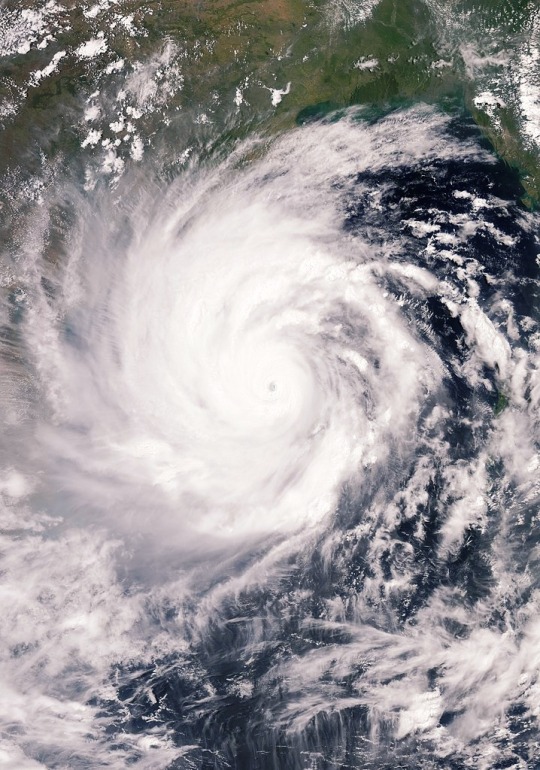
My city, Kolkata (in WB), was ravaged, with thousands of trees uprooted, electricity poles torn down, buildings and temporary shelters shattered to the ground. The most devastating losses however, were faced by the poorest people in my state, those living in and around the Sunderbans Belt of Bengal. District after district was flooded, people gathering in storm shelters after losing everything, their homes, livelihoods and properties. Everything was swept away by the cyclone, swallowed and spat out, unrecognizable, in shreds. Our state, being a riverine terrain, housing the largest delta in the world, was already a precarious zone due to being hit by massive floods every monsoon, and this cyclone was the by far the deadliest blow to the already fragile ecosystem.



The loss estimated by govt and other authorities is worth somewere around INR 1 lakh Crore (USD 1,321,658,000).
Still now after 6 days since the cyclone hit, massive parts of Bengal are plunged in darkness, people stranded in temporary shelters, with no drinking water or food. Covid-19 seems a lesser threat now as compared to what we have faced.
Both national and international media are practically silent about it, with the result that the relief operations and funding are nowhere near the amount or efforts required. Even as I write this, millions of people are stranded at remote locations without communication, housing or basic food and water supplies.
I urge you, wherever in the world you are, please please come forward and help us out 🙏 even a single dollar, however much you are able to spare, will help. Every single contribution is going to help towards rebuilding the lives of millions.
👇👇👇Below are the details to some of the ground level NGOs working to provide relief, their details and authenticity have been verified by me, and wherever possible, I've provided links to their official websites. For any queries or details, feel free to contact me, reply in the comments or send asks.
👉A full list of all major NGOs working for relief and their contact / donation details can be found here. 👈
Please help to save the Cyclone Amphan Victims 🙏
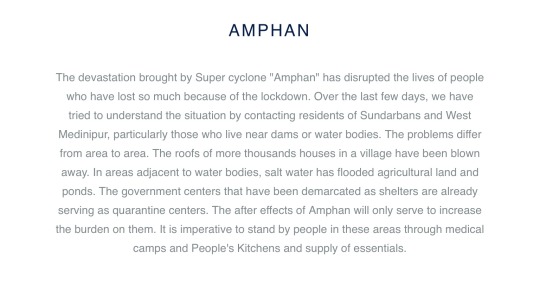
1. Quarantined Students Youth Network (volunteer students network who are doing relief work in major areas)
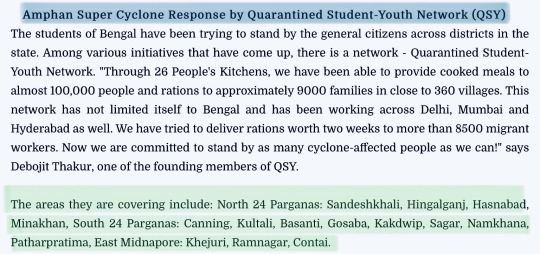
PAYPAL link 👇

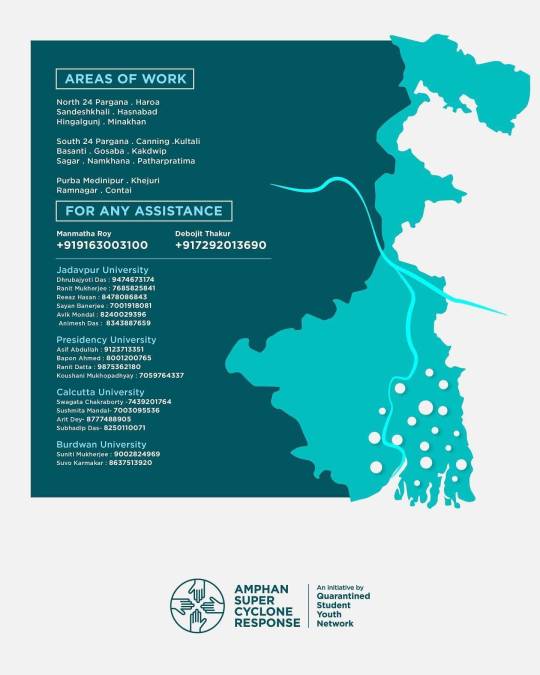
2. West Bengal State Emergency Relief Fund (govt treasury) :


I will be updating the list as and when further names come up.
Links to news articles regarding the Cyclone :
The Print | Scroll | TOI | NDTV | CNN | EdexLive | BBC | NY TIMES
PLEASE REBLOG AND SPREAD THE WORD. EVERY CONTRIBUTION WILL HELP. 🙏
#Cyclone Amphan#Cyclone Amphan help#Amphan West Bengal#India#West Bengal#natural disasters#Cyclone Amphan Donations#amphan news#amphan update#PLEASE REBLOG#DO NOT IGNORE#THIS IS AN EMERGENCY#@all my mutuals please help me out by reblogging this 🙏
682 notes
·
View notes
Text
Hey desis, remember near the end of last year, there was an Arijit Singh song released titled Pachtaoge? Remember the lyrics "Ho mujhe chhodkar jo tum jaoge/Bada pachtaoge, bada pachtaoge"? Yeah, that's right, that was 2019 literally warning us not to leave it or we will regret it.
For my non-desi followers, the Hindi title can be translated to "You will regret it" and the lyrics roughly mean "If you leave me/you are gonna regret it, you are gonna regret it so much" and honestly I feel that right now.
#come back 2019#fuck 2020#amphan#cyclone#cyclone amphan#covid#corona#coronavirus#covid19#covid 19#covid virus#covid2020#india#desi#bollywood#arijit singh#vicky kaushal#nora fatehi#wedt bengal#song#mood#original post
93 notes
·
View notes
Text

The LORD keeps you from all harm. Psalms 121 : 7
கர்த்தர் உன்னை எல்லாத் தீங்குக்கும் விலக்கிக் காப்பார். சங்கீதம் 121 : 7
#cyclone #storm #india #nature #s #mustang #weather #rain #wind #thunderstorm #photography #tropicalcyclone #v #monsoon #rainfall #cyclones #cyclonenation #rainy #rains #rainstorm #rainyseason #amphan #ford #bhfyp #monsoonweather #chennaicyclone #Cyclonechennai #chennai #Michaung
0 notes